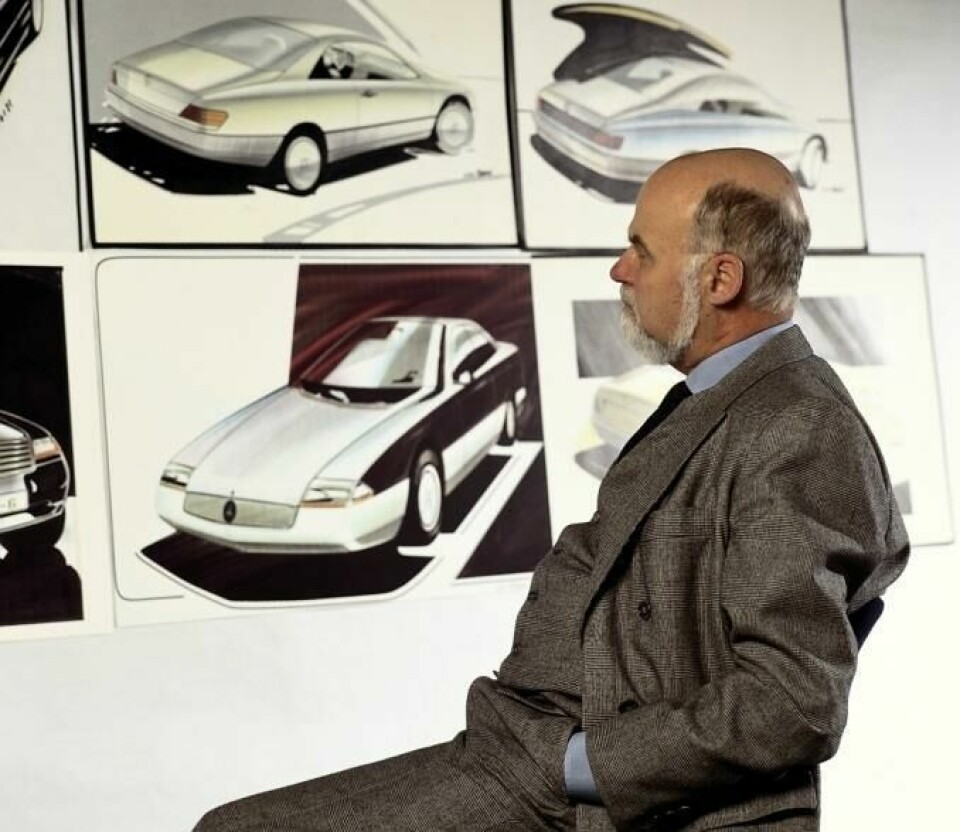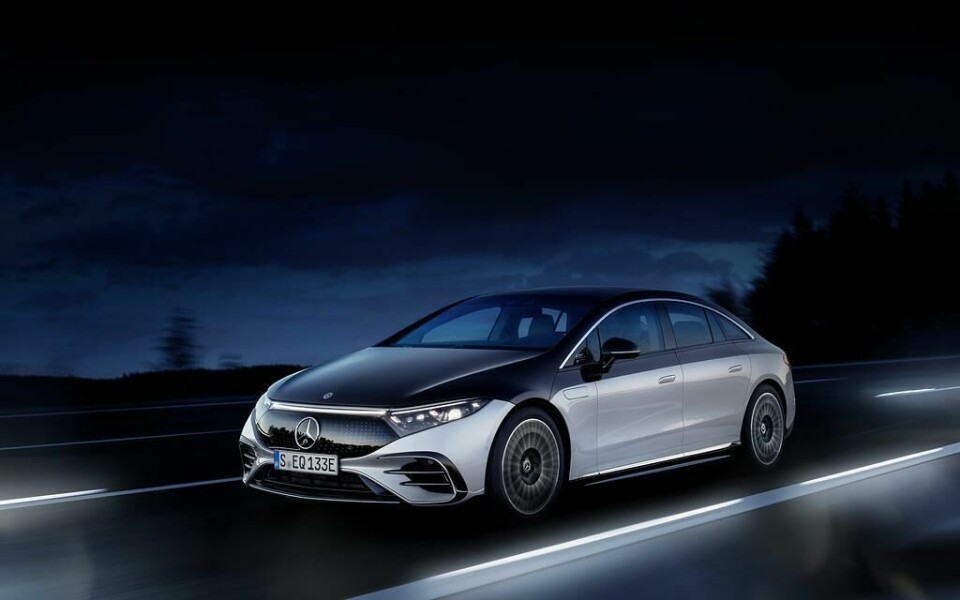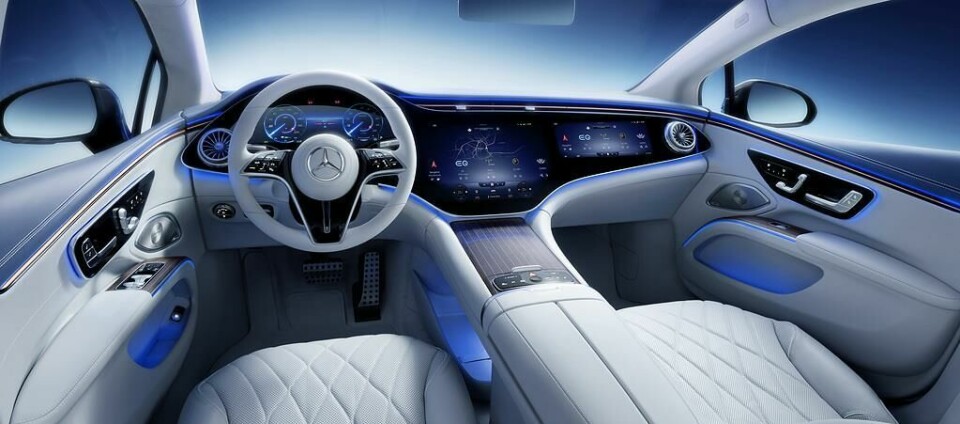
Opinion: a brand story untold – Mercedes’ EQS
Telling the brand story will be the most important task for car designers in the future as electrification, urbanisation, congestion and developments around self-driving cars will conspire to curtail the driving experience. Thus, the brand story will soon be the only truly differentiating USP. Niels van Roij examines the Mercedes-Benz EQS in this light
Until the turn of the century, Mercedes-Benz design was Teutonic. Precisely chiselled bodies told the story of their vault-like build quality. Until then, all new Mercedes models brought stylistic odes to previous cars - as good design houses inside and outside the automotive realm still do to this day. New cars made the family bond visual and thus the model future-proof, according to then design chief Bruno Sacco. After the year 2000 the vision at Mercedes-Benz changed radically. With the departure from the ‘horizontal homogeneity and vertical affinity’ philosophy both conceptually as well as aesthetically the brand moved away from longevity. Design at Das Haus was not aimed at timelessness any longer, but rather at simple ephemeral fads.
Fashion over substance. Gone was Das Beste Oder Nichts. This change was not limited to merely the aesthetics of the cars, as the company also felt from grace when it came the engineering quality of their cars: the W220 S-Class replacing the legendary W140 in 1998 was prone to rust.

One could argue conceptually the EQS could be compared to the W140. Radical new thinking was applied by the Stuttgart brand for both projects and seemingly no expense was spared on development. Similarly to the W140 a ground up new platform was developed for the EQS, it is not a mere conversion based on the platform of an ICE car. The EQS has best in class aerodynamics, like the W140 at the time, and marks a true turning point: the start of a new era at Mercedes-Benz.
That is where the comparisons stop. Because despite the fact the W140 was baptised ‘The Cathedral’ by the press shortly after its launch - it wasn’t as good proportionally as Sacco would have wanted - at least visually it oozed Teutonic excellence. The EQS is visually blobby and proportionally undefined. The non-descript forms bear no resemblance to anything out of the extraordinarily rich Mercedes-Benz heritage. On top of that it isn’t a classic sedan with a separate nose, cabin and trunk but also isn’t an aerodynamic mono-volume. The EQS seems unwilling to commit itself to anything.
Judging its size, a V8 would easily fit in the EQS nose. An electric motor is the size of a water melon and doesn’t need that gigantic space. A luggage compartment is absent in the nose too. Also noteworthy upfront are the facial features of the EQS: an immense faux open mouth is flanked by huge fake side intakes. Why not communicate that this electric car has no need for massive AMG-amounts of combustion air?
The front, according to chief designer Gorden Wagener, resembles a high-speed bullet train. Why that is a relevant choice he doesn’t mention. A selection of both young and established brands prove that shaping a great Down the Road Graphic can be done without colossal fake grilles. The distinctive Porsche Taycan, Hyundai Ioniq 5 and Lucid Air all can do without, while exuding a way more modern overall design too.

A more chiselled surface language would link visually to the most important cars out of the Mercedes line-up from the 60’s, 70’s and 80s. These timeless cars radiated a regal class and modernity. Brands like Volvo and Range Rover, with similar values compared to the Sacco Mercedes designs, have consistently shown utterly modern work based on relevant heritage design ques. Even newcomers like the Hyundai Ioniq 5 and Polestar 2 prove there is space and possibility to design well-defined, crisp, contemporary electric cars.
Inside the EQS the saga continues. It might feature more interior space than any electric luxury sedan out there, but stylistically it fails to deliver the message of quality. On top of that the MBUX Hyperscreen offers a terrible human machine interface, as the brand - once known for perfect ergonomics and usability by touch - deleted almost all physical switchgear from the interior.
According to Mercedes-Benz the EQS offers S-class clientele an electric luxury sedan. The S-class demographic isn’t their youngest group of clients. Pair that with the 2021 U.S. Tech Experience Index Study, that found that in the first three months of ownership less than half of new car owners used the technology available in their cars - and over 60% of owners have yet to use any of the available tech at all in the first place – and the problem is clear. The elderly clients able to afford the EQS will have even more difficulty to reach their in-car technology, now there is no physical switchgear anymore to help them find it. And while searching, their eyes will focus away from the road, on the Hyperscreen, into endless menus. Rather than watching traffic. The EQS lasers, cameras – and in worst case scenario airbags – better be good…

Furthermore the driver will be distracted and fatigued by the Hyperscreen backlights, combined with the tacky colour and materials choices. Especially the vulgar mood lighting available in all nouveau riche fairground colours. Gorden Wagener explains in the introduction video of the EQS that “It is all about desire. And desire is about two things: beauty and the extraordinary, boosted by the X-factor.” Clearly the days of ‘horizontal homogeneity and vertical affinity’ are long gone.
Likely the Mercedes-Benz EQS is technically the best electric car to date. With high build quality, impressive range and tight panel gaps. However, the design literally and figuratively conceals the underlying innovative technology through meaningless styling and poor design choices that neither link to the glorious Mercedes-Benz heydays, nor its advanced engineering. The most promising Mercedes, with the technology of the future, turns out to be one lacking a strong brand story.



